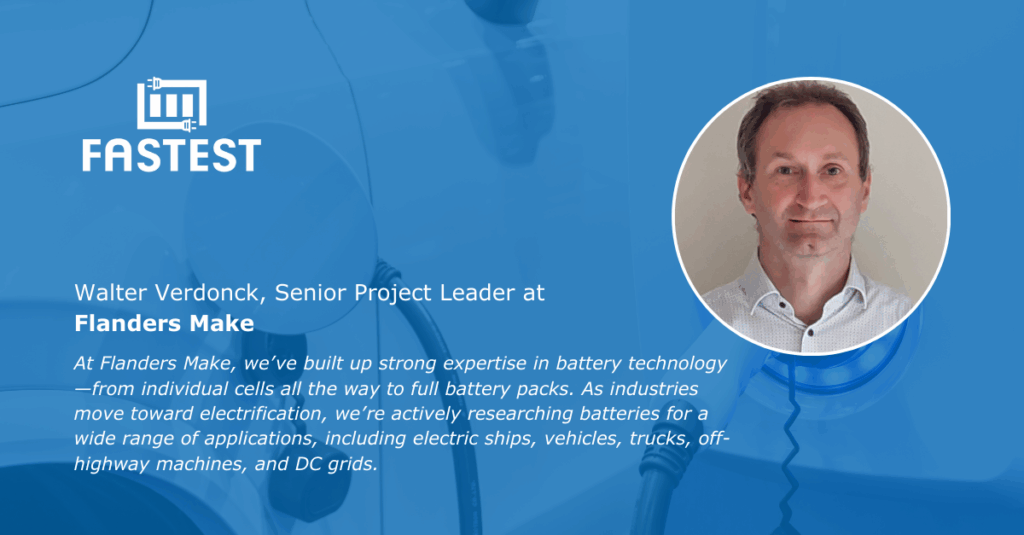
In this new interview, Walter Verdonck explains how Flanders Make is integrating virtual benches with the test-centre management system via an IoT data platform, enabling faster campaigns and direct sim-to-measurement comparison.
How will you integrate your virtual benches with the test center management system, and what challenges do you anticipate?
At Flanders Make, we’re working on combining our virtual simulations with real-world testing setups to improve how we test batteries. To do this, we’re building a central data platform that connects everything. This platform—based on IoT technology—will collect, organize, and manage all the data from both virtual and physical test benches.
The big advantage? It allows us to run faster, more flexible tests and make better decisions by comparing simulated results with real-world data in one place.
Of course, there are some challenges. First, we need to make sure the data formats and communication protocols used by the different benches match up with the system. Then, we must check that our virtual simulations are accurate and reliable—so they reflect what really happens in physical tests. If needed, we’ll fine-tune the models to make sure they’re spot on.
Security is another key concern. We’re putting strong cybersecurity measures in place to protect sensitive data and prevent unauthorized access. And finally, we’re designing the system to grow with us—so we can easily add new benches and test types in the future.
Can you describe the technical capabilities and limitations of your virtual and experimental test setups at cell, module, and pack levels?
At Flanders Make, we’ve built up strong expertise in battery technology—from individual cells all the way to full battery packs. As industries move toward electrification, we’re actively researching batteries for a wide range of applications, including electric ships, vehicles, trucks, off-highway machines, and DC grids.
Our capabilities cover everything from designing battery system architecture and building battery packs, to integrating advanced cooling systems and developing battery management systems (BMS) that monitor battery health and performance.
In our labs, we test cells, modules, and packs to help choose the best battery for each application. We run endurance and ageing tests to see how batteries perform over time. We also use climate chambers to test how batteries behave under different temperatures, and to speed up ageing tests so we can predict long-term performance.
On the virtual side, we can simulate and validate new designs before building them. This includes feasibility studies, prototyping, and Hardware-in-the-Loop (HiL) testing of complete drivetrains—covering the battery, inverter, motor, and gearbox. This helps us explore innovative cooling and lubrication systems without needing a full physical setup right away.
Limitations? Like any setup, virtual tests need to be carefully calibrated to match real-world conditions. And while our experimental setups are advanced, they’re always evolving to keep up with new battery technologies and applications.
Walter Verdonck, Senior Project Leader at Flanders Make, together with the other members of the Flanders Make Team for FASTEST project.
